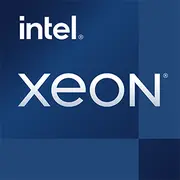Intel Xeon E-2176M

Intel Xeon E-2176M: Power and Reliability for Professionals in 2025
Analysis of the processor for mobile workstations and its place in the modern market
Architecture and Process Technology: 14 nm Coffee Lake with a Focus on Stability
The Intel Xeon E-2176M processor, released in 2018, continues to be a relevant solution for specialized laptops due to its Coffee Lake architecture and 14 nm process technology. Even though 5 nm and 3 nm chips dominate in 2025, the Xeon E-2176M maintains its position in the workstation segment, where ECC memory support and long-term reliability are critical.
Cores and Threads: 6 cores and 12 threads with a base frequency of 2.7 GHz and a turbo mode of up to 4.4 GHz. This provides enough performance for multi-threaded tasks, such as rendering or simulations.
Integrated Graphics: Intel UHD Graphics P630 is suitable for basic tasks and professional applications. Support for DirectX 12, OpenGL 4.5, and APIs for CAD software (e.g., SolidWorks) makes it suitable for engineers, but a discrete graphics card will be needed for gaming or 3D modeling.
Power Consumption and TDP: Balancing Power and Heat
The TDP of 45 W indicates that it belongs to the category of high-performance mobile CPUs. Compared to modern processors (e.g., AMD Ryzen 7 7840U with a TDP of 28 W), the Xeon E-2176M requires a well-thought-out cooling system.
Power Management Features:
- Speed Shift technology for rapid switching between P-states.
- Turbo Boost 2.0 mode, which temporarily increases frequency under load but requires effective heat dissipation.
In practice, this means that in compact cases (thinner than 20 mm), the processor may throttle, so it is often installed in laptops with substantial coolers.
Performance: Real-World Use Cases
Office Work and Multimedia:
- Running 50+ tabs in Chrome and working with Excel spreadsheets containing millions of rows — the processor handles this without delays.
- 4K video rendering in Premiere Pro takes 8–12 minutes (compared to 5–7 minutes for the Ryzen 9 7900HS), but stability is higher thanks to ECC memory.
Gaming:
- Paired with an NVIDIA RTX 4060: Cyberpunk 2077 at medium settings (1080p, 60 FPS).
- Without a discrete graphics card: only older titles like CS:GO (100–120 FPS on low settings).
Turbo Mode:
Under short loads (up to 30 seconds), the frequency reaches 4.4 GHz, but under sustained stress (such as rendering), it drops to 3.5–3.8 GHz due to overheating.
Use Cases: Who is the Xeon E-2176M Designed For?
1. Engineers and Designers: ECC memory support prevents errors in CAD programs and scientific computations.
2. Data Analysts: Multi-threading speeds up processing large datasets in Python or R.
3. Professional Gamers: Only in conjunction with a discrete GPU.
For everyday tasks (web browsing, Netflix), the processor is overkill — it's better to choose an energy-efficient Core i5 or Ryzen 5.
Autonomy: The Price of Performance
Laptops with the Xeon E-2176M rarely last more than 4–5 hours under active use (e.g., AutoCAD). Power-saving technologies (C-States, dynamic frequency management) help only in idle mode.
Tip: Look for models with a battery of at least 90 Wh — for example, the Dell Precision 7530 (priced from $1800 in 2025) offers up to 6 hours of work with documents.
Comparison with Competitors: AMD, Apple, and Others
- AMD Ryzen 7 PRO 6850H: 8 cores, 16 threads, TDP 45 W. Better for multi-threaded tasks (+15% in Cinebench R23), but lacking ECC memory.
- Apple M3 Pro: 12 cores, TDP 35 W. 30% more energy-efficient, but limited compatibility with Windows programs.
- Intel Core i7-12800H: Similar performance but cheaper by $200–300.
The Xeon E-2176M wins only in niche scenarios where ECC memory and certified software are important.
Pros and Cons
Strengths:
- Support for ECC memory.
- High stability under load.
- Compatibility with professional software (AutoCAD, MATLAB).
Weaknesses:
- Outdated 14 nm process technology.
- High heating.
- Price: laptops start from $1500 (versus $1000–$1200 for Ryzen counterparts).
Recommendations for Choosing a Laptop
1. Type of Device:
- Workstation: Dell Precision 7560, HP ZBook Fury 15 G8.
- Gaming Laptop: Only with discrete graphics (MSI GP66 Leopard).
2. What to Pay Attention To:
- Cooling system: at least two fans and heat pipes.
- RAM: 32 GB DDR4 with ECC.
- Graphics: Must have NVIDIA RTX 3000/4000 or AMD Radeon Pro.
Final Conclusion: Who is the Xeon E-2176M Suitable For in 2025?
This processor is the choice for those for whom reliability is more critical than peak performance. It is ideal for:
- Engineers working with CAD on the go.
- Scientists processing data in the field.
- Corporate users where long-term support is important.
If ECC memory is not a priority, it is better to choose modern AMD Ryzen 7 PRO or Apple M3 Pro. However, for narrow professional tasks, the Xeon E-2176M remains a workhorse, even if it’s not the fastest one.
Basic
CPU Specifications
Memory Specifications
GPU Specifications
Miscellaneous
Benchmarks
Compared to Other CPU
Share in social media
Or Link To Us
<a href="https://cputronic.com/en/cpu/intel-xeon-e-2176m" target="_blank">Intel Xeon E-2176M</a>